
- Subject:
- Applied Science
- Biology
- Life Science
- Material Type:
- Module
- Author:
- OpenStax College
- Date Added:
- 07/18/2021

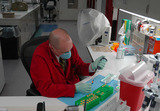
By the end of this section, you will be able to:Identify and describe the properties of lifeDescribe the levels of organization among living thingsRecognize and interpret a phylogenetic treeList examples of different sub disciplines in biology

The topic of this video module is how to classify animals based on how closely related they are. The main learning objective is that students will learn how to make phylogenetic trees based on both physical characteristics and on DNA sequence. Students will also learn why the objective and quantitative nature of DNA sequencing is preferable when it come to classifying animals based on how closely related they are. Knowledge prerequisites to this lesson include that students have some understanding of what DNA is and that they have a familiarity with the base-pairing rules and with writing a DNA sequence.
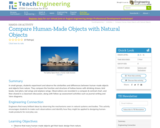
In small groups, students experiment and observe the similarities and differences between human-made objects and objects from nature. They compare the function and structure of hollow bones with drinking straws, bird beaks, tool pliers, bat wings and airplane wings. Observations are recorded in a compare & contrast chart, and then shared in a classroom discussion, along with follow up assessment activities such as journal writing and Venn diagrams.
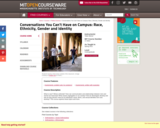
What is race? What is ethnicity? How can communication and relationships between men and women be improved? What causes segregation in our society? How do stereotypes develop and why do they persist? How do an individual's racial, ethnic, and sexual identities form and develop? This course explores these topics and more.
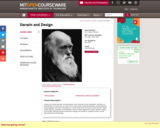
Humans are social animals; social demands, both cooperative and competitive, structure our development, our brain and our mind. This course covers social development, social behaviour, social cognition and social neuroscience, in both human and non-human social animals. Topics include altruism, empathy, communication, theory of mind, aggression, power, groups, mating, and morality. Methods include evolutionary biology, neuroscience, cognitive science, social psychology and anthropology.
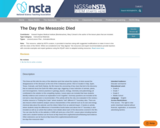
This three-act film tells the story of the detective work that solved the mystery of what caused the disappearance of the dinosaurs at the end of the Cretaceous period. Shot on location in Italy, Spain, Texas, Colorado, and North Dakota, the film traces the uncovering of key clues that led to the discovery that an asteroid struck the Earth 66 million years ago, triggering a mass extinction of animals, plants, and microorganisms. Science practices in geology, physics, biology, chemistry and paleontology all contributed to the solution to this compelling mystery. Lesson plans are included that have students identify evidence and construct an explanation to tie it together. Summary questions are included at the end and a class discussion is recommended. (This activity will be the only one evaluated in this review.) Another resource is Finding the Crater where students visit different K-T boundary sites. There are also lessons where students analyze various characteristics of the asteroid such as its size and energy, chemical data about the asteroid, and the iridium fallout from an asteroid impact. A hands-on activity where students study the differences in foraminifera fossils below and above the K-T boundary is also included as well as an article that outlines more details about each of the discoveries covered in the film. You can view the film on the website or HHMI will send you a free DVD. Lesson plans including teacher notes and a student handout can be found at http://www.hhmi.org/biointeractive/following-trail-evidence.

The principles involved in morphogenesis and the determination of complex cellular patterns are examined using examples from animal systems in which the tools of genetics, molecular biology and cell biology have been applied to reveal mechanism. This graduate and advanced undergraduate level lecture and literature discussion course covers the current understanding of the molecular mechanisms that regulate animal development. Evolutionary mechanisms are emphasized as well as the discussion of relevant diseases. Vertebrate (mouse, chick, frog, fish) and invertebrate (fly, worm) models are covered. Specific topics include formation of early body plan, cell type determination, organogenesis, morphogenesis, stem cells, cloning, and issues in human development.
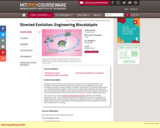
Enzymes, nature's catalysts, are remarkable biomolecules capable of extraordinary specificity and selectivity. Directed evolution has been used to produce enzymes with many unique properties, including altered substrate specificity, thermal stability, organic solvent resistance, and enantioselectivity--selectivity of one stereoisomer over another. The technique of directed evolution comprises two essential steps: mutagenesis of the gene encoding the enzyme to produce a library of variants, and selection of a particular variant based on its desirable catalytic properties. In this course we will examine what kinds of enzymes are worth evolving and the strategies used for library generation and enzyme selection. We will focus on those enzymes that are used in the synthesis of drugs and in biotechnological applications. This course is one of many Advanced Undergraduate Seminars offered by the Biology Department at MIT. These seminars are tailored for students with an interest in using primary research literature to discuss and learn about current biological research in a highly interactive setting. Many instructors of the Advanced Undergraduate Seminars are postdoctoral scientists with a strong interest in teaching.

An introduction to theoretical studies of systems of many interacting components, the individual dynamics of which may be simple, but the collective dynamics of which are often nonlinear and analytically intractable. Topics vary from year to year. Format includes both pedagogical lectures and round-table reviews of current literature. Subjects of interest include: problems in natural science (e.g., geology, ecology, and biology) where quantitative theory is still in development; problems in physics, such as turbulence, that demonstrate powerful concepts such as scaling and universality; and modern computational methods for the simulation and study of such problems. Discussions in context of contemporary experimental or observational data.
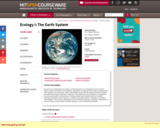
We will cover fundamentals of ecology, considering Earth as an integrated dynamic system. Topics include coevolution of the biosphere, geosphere, atmosphere and oceans; photosynthesis and respiration; the hydrologic, carbon and nitrogen cycles. We will examine the flow of energy and materials through ecosystems; regulation of the distribution and abundance of organisms; structure and function of ecosystems, including evolution and natural selection; metabolic diversity; productivity; trophic dynamics; models of population growth, competition, mutualism and predation. This course is designated as Communication-Intensive; instruction and practice in oral and written communication provided. Biology is a recommended prerequisite.
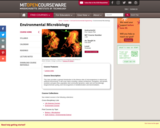
A general introduction to the diverse roles of microorganisms in natural and artificial environments. Topics include: cellular architecture, energetics, and growth; evolution and gene flow; population and community dynamics; air, water, and soil microbiology; biogeochemical cycling; and microorganisms in biodeterioration, bioremediation, and pest control.
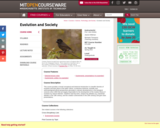
This course provides a broad conceptual and historical introduction to scientific theories of evolution and their place in the wider culture. It embraces historical, scientific and anthropological/cultural perspectives grounded in relevant developments in the biological sciences since 1800 that are largely responsible for the development of the modern theory of evolution by natural selection. Students read key texts, analyze key debates (e.g. Darwinian debates in the 19th century, and the creation controversies in the 20th century) and give class presentations.
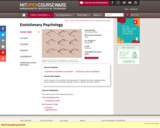
Current research on the evolution and development of cognition and affect, including intuitive physics, biology, and psychology, language, emotions sexuality, social relations.
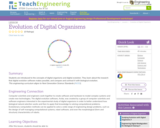
Students are introduced to the concepts of digital organisms and digital evolution. They learn about the research that digital evolution software makes possible, and compare and contrast it with biological evolution.

A hypothetical scenario is introduced in which the class is asked to apply their understanding of the forces that drive natural selection to prepare a proposal along with an environmental consulting company to help clean up an area near their school that is contaminated with trichloroethylene (TCE). Students use the Avida-ED software application to test hypotheses for evolving (engineering) a strain of bacteria that can biodegrade TCE, resulting in a non-hazardous clean-up solution. Conduct this design challenge activity after completion of the introduction to digital evolution activity, Studying Evolution with Digital Organisms.

General Biology is intended to leave the student with an integrated view of the living world including the nature of sciences, evolution of biological organization, composition and organization of living substances, metabolism, control, reproduction, heredity and ecological relationships. This class meets the A.A. degree lab science requirement in the State of Washington.Login: guest_oclPassword: ocl
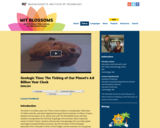
This BLOSSOMS lesson will help students conceptualize the enormity of geologic time and learn about important events in Earth s history. Students will also learn how geologic time can help explain seemingly incomprehensible processes, like the formation of the Himalayan Mountains from a flat plain to their current height, and the evolution of a tiny group of reptiles into enormous dinosaurs. During the breaks, students will construct a geologic timeline of their own in the classroom and do simple calculations to determine how long amounts of time can lead to impressive changes in the height of the Himalayan Mountains and the size of a group of reptiles.
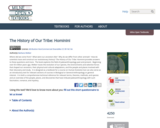
Where did we come from? What were our ancestors like? Why do we differ from other animals? How do scientists trace and construct our evolutionary history? The History of Our Tribe: Hominini provides answers to these questions and more. The book explores the field of paleoanthropology past and present. Beginning over 65 million years ago, Welker traces the evolution of our species, the environments and selective forces that shaped our ancestors, their physical and cultural adaptations, and the people and places involved with their discovery and study. It is designed as a textbook for a course on Human Evolution but can also serve as an introductory text for relevant sections of courses in Biological or General Anthropology or general interest. It is both a comprehensive technical reference for relevant terms, theories, methods, and species and an overview of the people, places, and discoveries that have imbued paleoanthropology with such fascination, romance, and mystery.
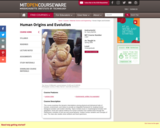
Examines the dynamic interrelations among physical and behavioral traits of humans, environment, and culture to provide an integrated framework for studying human biological evolution and modern diversity. Topics include issues in morphological evolution and adaptation; fossil and cultural evidence for human evolution from earliest times through the Pleistocene; evolution of tool use and social behavior; modern human variation and concepts of race. Includes study of stone artifacts and fossil specimens.